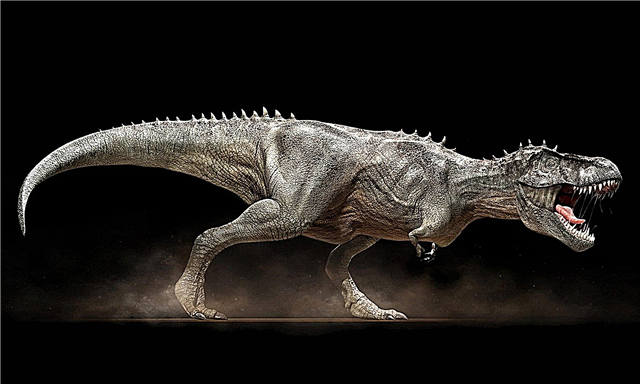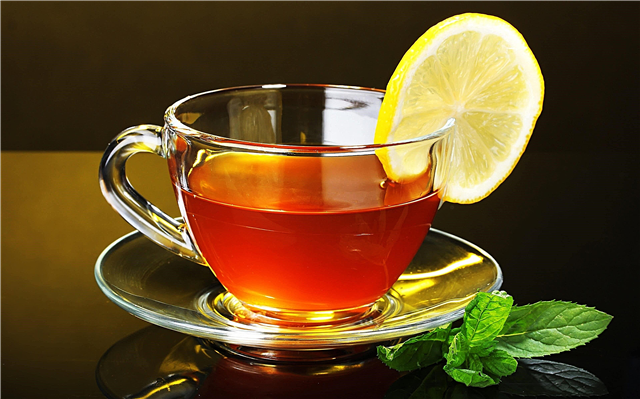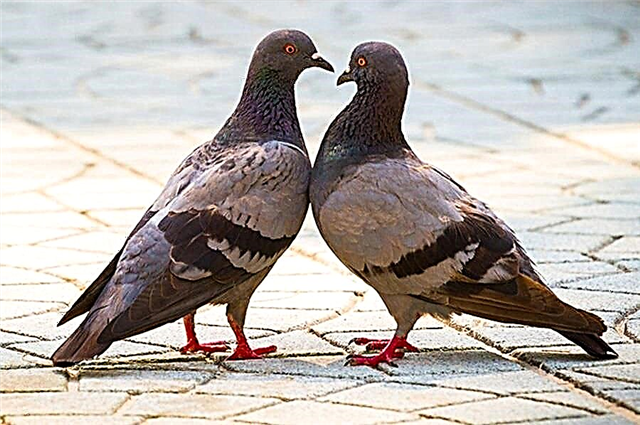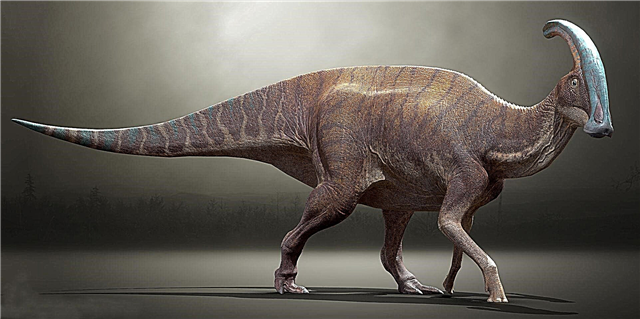
The territory of Russia is located in several natural zones at the same time. Consider the birds living in our country, as well as their characteristics, prevalence, lifestyle with photos and videos.
Fauna of birds of Russia
The fauna of birds of Russia is represented by all species of birds that have been registered on the territory of the country. This list is represented by 790 species. Among them are endemic species, that is, those that are found exclusively within the Russian Federation. For example, black crane, sandpits, wild boar, etc.

The total number of birds including subspecies is 1334 geographical forms. It is also worth highlighting such categories as nesting (657 species) and vagrant (110 species). You can only meet migratory birds when they fly to winter or migrate.
Detachments
Division into orders is one of the main scientific classifications of birds. This is one of the levels of the hierarchical system, which is located above the family and below the class. The most numerous units within our country:
- Anseriformes (swans, geese, geese, ducks, etc.);
- Charadriiformes (magpies, lapwings, zuikas, etc.);
- Passeriformes (larks, swallows, wagtails, etc.);
- Falconiformes (eagles, vultures, moons, kites, etc.).

List of birds by habitat
Birds of Russia, depending on their habitat, are divided into the following categories:
- urban
- water (river, sea);
- forest;
- field
- tundra;
- arctic.

Representatives of a particular category adapted to the conditions of their zone. This adaptation affects all components: lifestyle, nutrition, social behavior, etc.
Urban
Birds that have changed their lifestyle and habits in connection with the urbanization of territories are called urban. They were forced to adapt to new conditions, and settled next to people.

Gray pigeon
A pigeon can have a diverse appearance, since this species is characterized by 28 types of coloring or morphs. The most common option is a dark gray color with colorful shades (purple, copper, green). There are black stripes on the wings, and from the inside they are almost white. Individuals reach about 30 cm in length. Careless nests are made from plant stems.

Wagtail
The variety of wagtails within our country is quite large. But next to the people settled a white wagtail. This is a small bird up to 18 cm in length and weighing about 20 g. The bird constantly shakes its long tail. From here came its name. The color is predominantly gray with a light belly. Prefers to settle near water bodies.

Starling
Starlings are small birds about 20 cm long and weighing up to 75 g. They are known for their unique plumage with colorful tides, which, moreover, varies depending on the season. In terms of diet, starlings are omnivores. And they like to arrange homes in hollow trees.

Sparrow
The most famous and common species living in urban environments. It weighs only about 30 g, and the body length is no more than 16 cm. It differs in brown color with black and brown spots. Cheeks and abdomen are light. It is noteworthy that sparrows do not live away from people. They feed on seeds, insects, fruits.

Swallow
Swallows spend most of their time flying. They have a small body (up to 23 cm), long thin wings, and the structure of their legs does not allow them to fully move on the ground. Among this family there is even a separate urban view, which is kept close to people. It feeds on insects and builds strong nests. It uses walls of houses and other surfaces as a support.

Redstart
Bright bird about 14 cm long. The color combines shades of red, gray, as well as white and black. Her tail is also painted in a saturated orange color and is in constant motion. Hence the name of the species.Redstart is common throughout the country, while other species are found in southern Siberia.

Water
Birds that prefer an aquatic habitat can be divided into river and sea. Their species diversity is quite large. However, these individuals are united by a love of swimming and dietary features: fish, small sea and river animals, and mollusks.

River
The territory of Russia is rich in large and small rivers, lakes. Therefore, there are all necessary conditions for the existence of river bird species. The valleys near the reservoirs serve for them at the same time as a place for feeding, nesting, molting, resting, etc.

Scoter
Belongs to the family Anseriformes. The length of the turpan reaches about 55 cm on average. Weight - a little more than 1 kg. The male and female are slightly different in size and color: the males are black, and the females are brown. They feed on small river fish, shellfish. Turpan is an endangered species.

Interesting fact: Turps are able to dive 10 m deep into the pond in search of food, and also spend under water for about a minute.
Kingfisher
Kingfishers are no more than sparrows, but differ in extremely bright color and a long beak. They have a blue back and a reddish belly, and white feathers on the sides of their heads. To nest kingfishers burrow holes on river cliffs. Sometimes, in search of food, a bird can fly at high speed directly above the surface of the water.

Moryanka
Other names for the bird are alleyka, sauk. Refers to Anseriformes. A characteristic feature of the moraine is the long thin tail inherent in males. Both males and females regularly change color depending on the mating season, age, season. Mariners are able to dive deep - up to 60 m.

Loon
On the territory of the Russian Federation there are three types of loons: black-throated, red-throated and polar. Black-throated is the most common. The body length is about 60-75 cm. The weight of the males is from 2.4 to 3.4 kg, and the females are smaller. The loons change color depending on age and time of year.

Whooper Swan
Large graceful birds - up to 1.8 m in length, and weigh about 10 kg. They prefer to build huge nests on lakes, in reeds. Swans are known for forming pairs for many years. Whoopers make loud noises, both during swimming and in flight. They feed on plants and aquatic invertebrates.

Marine
Many water birds of Russia live on the shores of the Sea of Okhotsk, Bering and other seas. Here are formed bird markets. These zones serve as a haven for both permanent and migratory inhabitants.

Hatchet
The hatchet belongs to the order Charadriiformes. The body of the bird is about 40 cm long, weight - on average 700 g. Color is mostly dark - black, brown, with the exception of white cheeks, orange beak, yellow paws and long bright feathers behind the eyes. Birds come together in large colonies. Excellent fly, swim and dive.

Interesting fact: several geographical features are named after the hatchet. For example, Toporkovy Island (Kuril Islands) and Toporkov Island (Commander Islands).
Kachurka
In the Russian Federation, the family of petals is represented by two species - black and gray, between which there is much in common. Kachurki are small in size but have long wings. Birds move very quickly and can be confused with swallows from a distance. The diet of storm petrel is small fish, plankton.

White-tailed eagle
A large bird of prey, which weighs 5 kg on average, and the body grows to almost 1 m in length. Brown color with lighter plumage on the chest. The name of the species comes from the white tip of the tail. It is noteworthy that females are larger than males. Eagles eat fish, so they live near water bodies. Nests are big - 1 m high and 2 m long. It is listed in the Red Books (RF and international).

Interesting fact: wingspan of a white-tailed eagle - up to 2.5 meters.
Cormorant
Of the Cormorant family in the country, the Bering cormorant is most common. It features a black color with a metallic sheen. Females are usually larger (body up to 77 cm in length, and weight - about 1.5 kg).Cormorants have at least 6 color changes, which depends on the mating season.

Guillemot
There are two types of guillemot: thin-billed and thick-billed, which are very similar in appearance. They are common on the shores of the Far Eastern seas. The basis of the diet is fish. The guillemots have a conservative character, which can be seen in monogamy and a permanent nesting place. Kayr swim more skillfully than stay in the air.

Forest
The greatest diversity of birds is found in deciduous and cedar-broad-leaved forests. All kinds of trees in such forests contribute to the settlement of various birds. Coniferous forests are not too populated by birds, but here there are their own characteristics. Woodpeckers, owls, partridges, etc. live here.

Golden eagle
Golden eagle is listed in the Red Book of the Russian Federation. Larger are females, which can weigh up to 7 kg and have a body almost a meter long. Golden eagles are distinguished by a dark brown color and long wings, a rounded tail. Birds have powerful paws with sharp claws, with which they hold prey.

Interesting fact: golden eagles build huge nests from thick branches of trees, grass, wool. In such a nest even a horse can fit.
Black grouse
The genus of black grouse has several species. Among them there is an endemic - Caucasian black grouse. Females and males are very different from each other. Males are larger, heavier, have a black color, which casts blue and green colors. Females have brownish-red color. They make nests on the ground.

Gray heron
A gray heron can be easily recognized by typical characteristics of the species: long neck, height up to 1 meter, long legs, large beak. She easily moves on marshy terrain. During the flight, the bird uniquely folds its neck in the shape of the letter "S". It is a predator by nature.

Swift
Black swifts outwardly larger than swallows. They weigh about 40 g, and reach a length of 18 cm. Outwardly, the bird seems completely black, but in the plumage there are gray light tones. There are no differences between males and females. The wings of the swifts are long and sickle-shaped. Birds fly very quickly, now planning, then making active wings with wings.

Interesting fact: Swift flight speed can be 120-180 km / h. The bird is able to stay in the air for several years without stopping. Swifts descend to the surface only for breeding.
Nightingale
Nightingales differ in miniature size (body 18 cm, weight - 25 g) and brown color. They love the presence of trees and water. Birds build cup-shaped nests from leaves. They feed mainly on worms and insects, as well as berries. A characteristic difference between the nightingale is sonorous and melodic singing.

Hawk owl
One of the species of owl family. It differs in average size, beautiful color (brown spotted back and light front with thin contrasting stripes), the absence of "ears" on the head. The diet is made up of small birds and rodents. Nests in hollows and stumps.

Field
Field or meadow birds are distinguished by a variety of species. They prefer thickets. Many species differ in masking color, so they are not easy to consider among meadow grasses and shrubs.

Lapwing
Another name for the bird is the pigfish, which belongs to the Charadriiformes family. The individuals reach 30 cm in length, weigh about 200 g. The color of the lapwing is very colorful, and a characteristic feature is a small crest on the head. Pygalitsa feed mainly on insects, seeds.

Lark
Field Lark has a light brown color, which allows it to remain virtually invisible among the thickets of dry grass. Male larks are larger than females. On the head is a small wrapped crest. Meadows, fields and steppes - a natural habitat of the lark. Among the thick trees can not be found.

Dumb quail
Dumb or Japanese quail is a migratory bird that has been domesticated by humans.Many consider it a subspecies of the quail, as these birds are very similar, with the exception of some external differences and the sounds made. Quail is widespread in Primorye.

Bustard
Bustards are very large birds. Males weigh up to 16 kg, body length - a little more than a meter. Females are half as much. Bustards are distinguished by their beautiful, diverse plumage, which combines shades of black, white, red and gray. Birds fly skillfully, but prefer to move on the surface more.

Tundra
Only those birds that do not need lush vegetation settle in the tundra zone. They also perfectly adapted to the cold difficult climate. The natural conditions of the tundra are frequent hills, an abundance of swamps, small ponds, as well as many lichens, mosses. The tundra and arctic zones border each other, therefore, the fauna of birds has common features.

Polar owl
A polar or white owl is the largest inhabitant of the tundra among all owls. It is characterized by a completely white color with small dark spots, although the chicks are born brown. Females are larger than males. The polar owl is a nomad and an active predator.

Interesting fact: The image of the polar owl is used in many industries. For example, in cinema and animation. This bird is also depicted on several coats of arms and is a symbol of the Canadian province of Quebec.
Punochka
The representative of the squad Voronoobraznyh. Punochka weighs only about 30 g with a body length of 16.5 cm. Males and females differ in color, especially during the mating season. Males are usually black, and females are white. Both have light belly. Bunnies feed on insects in the summer and grains in the winter.

Arctic
Despite the severity of the Arctic natural zone, its conditions do not deter local birds. Most of the local bird fauna is represented by marine and aquatic species.

Ipatka
Belongs to the family of cleaners. Ipatka has an unusual appearance, is similar to a dead end (belongs to this genus). The body is predominantly black, white chest and the area around the eyes. Bright orange paws and beak. The diet of ipatki is fish, squid, zooplankton.

The Big Horse
A beautiful and unusual bird from the order Charadriiformes. The large aster is medium in size, weighing about 250 g. It has a dark brown back color and a lighter chest. The orange beak stands out brightly, and on the forehead is a high crest of feathers that bend forward.

Interesting fact: large auklets have a unique feature - they have special feathers on their neck that give off a citrus scent. If at a distance of about 1 km there is a colony of auk, you can clearly hear this smell.
Burgomaster
The second name is the great polar gull. It is noteworthy that the bird got an unusual name because of its lifestyle. Polar seagulls live near bird markets and take a kind of “fee” from their inhabitants in the form of eggs and even chicks. This species is omnivorous. The burgomaster’s nests twist on the rocks.

Rare birds
A huge number of birds of the Russian Federation are considered rare and belong to different groups according to the degree of threat of extinction. And 7 species are considered completely extinct, for example, the red-legged ibis. The last time this bird was discovered in 1990 within the Amur Region. After the edits of 2016, more than 100 species of birds are listed in the Red Book of Russia.

Currently, the Far East is considered the only safe zone for rare birds within the country. It can rightly be called a natural reserve. Several factors threaten the birds, but most of them boil down to human activities: urbanization, changing climatic conditions and the corresponding consequences.
Tangerine
Belongs to the family of ducks. It differs in small sizes (weight up to 1 kg), and males - a bright color and a crest on the head. Mandarin ducks are found in the Sakhalin and Amur regions. They prefer mountain rivers surrounded by forests.They often sit on rocks or tree branches, and fly fast, easily performing various maneuvers. They feed on worms, caviar, and shellfish. The species is listed in the Red Book of the Russian Federation.

Larva
The gray larva is a representative of the Vorobinov squad. It is characterized by a black-and-white-gray color. This is the only representative of the genus that lives in Russia. Body length - up to 20 cm. Among other larvae-eaters it is able to overcome the greatest distances.

White stork
The most common species in its family. It reaches 125 cm in height, and weighs up to 4 kg. The whole body has a white color, and at the ends of the wings - black plumage. Outwardly, there is no difference between males and females. Prefers to settle in areas with vast meadows and swamps. It feeds on invertebrates and small vertebrates (frogs, snakes, insects, etc.).

Yellow-backed Flytrap
The yellow-backed flycatcher belongs to the passerine order. This is a small bird with a bright color - yellow-orange belly. It is found in the Far East. Viet nests in the hollows of old trees. It brings great benefits, destroying insects.

Sterkh
An endemic species from the Crane, found in the northern part of the country. It is listed in the international Red Book and the Red Book of the Russian Federation. In Yakutia, the population consists of 3,000 individuals. Cranes reach 140 cm in height, and weigh about 6-7 kg. Color - almost completely white.
The birds have a long beak, and their legs are arranged in such a way that they can easily move on marshy soil. The diet of the Siberian Cranes is mixed - they can eat both animal and plant foods.

Fish owl
A fish or Far Eastern owl is threatened with extinction. It is found in the forests of Primorye and Amur. The specimens are quite large: weight - about 4, body length - up to 70 cm. Owls are kept near rivers, because fish is the basis of the diet. They can lead an active lifestyle both night and day.

Bird Protection in Russia
Since 1993, the Bird Protection Union of Russia (abbreviated SOPR) has been operating in our country. This is a public environmental organization. Its main task is to preserve the species diversity of bird fauna, as well as the number of populations and natural habitats.
SOPR includes more than 2000 ornithologists (both professionals and amateurs), and branches are open in 64 regions of the Russian Federation. Thus, the activities of the Union extend to almost the entire territory of the country. The emblem of SOPR is a species of the snipe family, common curlew.

Under the leadership of the Union, special programs and projects aimed at environmental protection are being developed. Seminars, conferences are also organized, books, reference books, information booklets are published. Bird counts are regularly maintained.












